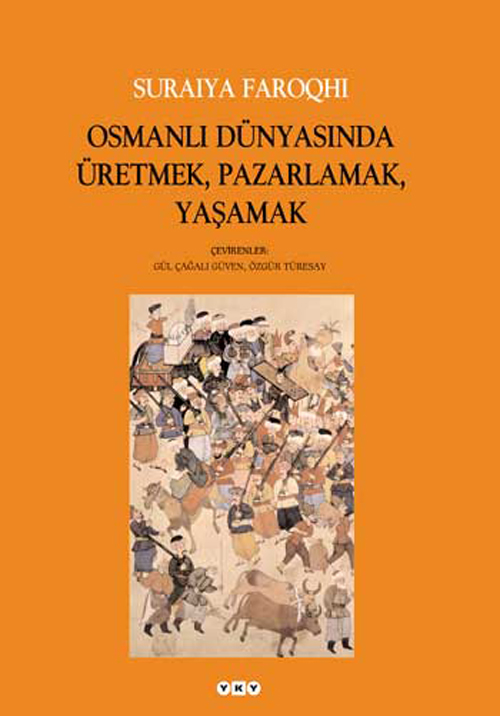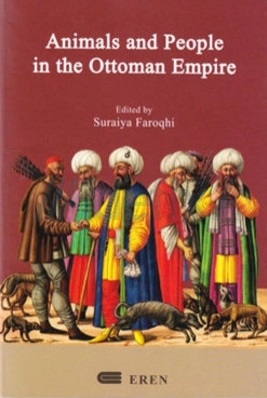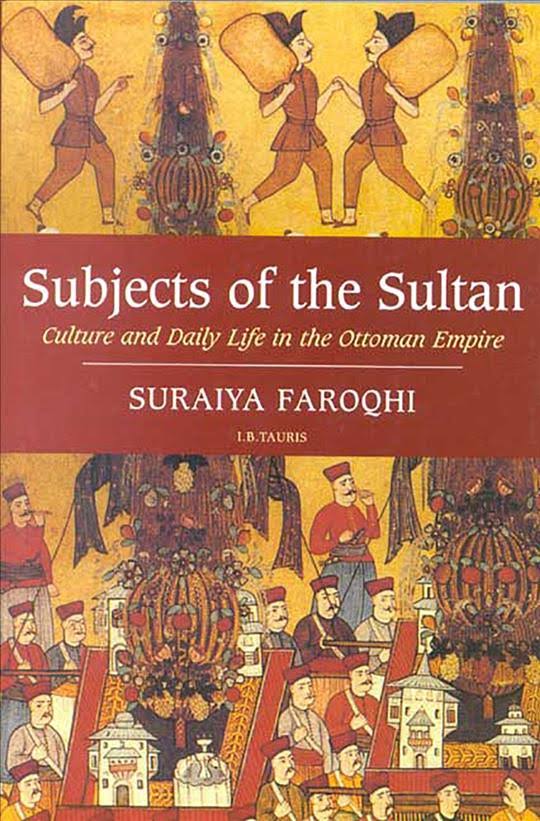Bilim Akademisi Konferansları – 75 Erken Modern Dönemde Varlıklı Osmanlı Kadınların Maddi Dünyası Konuşmacı: SURAİYA FAROQHİ Tarih: 19 Haziran 2019 Çarşamba 18:30 Yer: Yapı Kredi Kültür Sanat Merkezi
Osmanlı Dünyasında Üretmek, Pazarlamak, Yaşamak
Sureiya Faroqhi, Osmanlı tarihçiliğinin temellerini atan Ömer Lütfi Barkan ekolünün günümüzdeki en yetkin temsilcisi. Kitapta Faroqhi’nin “Ticaret Bağlantıları”, “Bursa’da Üretmek ve Yaşamak”, “Osmanlı Dünyasında Kadın Olmak” ile “Meşrulaştırma Davaları” başlıklı dört bölümde topladığı on dört makalesi yer alıyor.
Animals and People in the Ottoman Empire
Animals and People in the Ottoman Empire Suraiya Faroqhi Yayınevinden satın almak için tıklayınız. Similarly to members of other pre-industrial and industrial societies, the subjects of the Ottoman sultans depended on the animals they raised and whether they liked it or not, certain non-domestic animals sharing their home environments had a profound impact on their lives as well. Numerous topics await discussion: quite apart from milk, yoghurt and cheese, honey was in great demand, as it was one of the principal sweeteners in a world where sweet foods were popular yet cane sugar was scarce and expensive. Bee-keeping was therefore a common activity in Anatolian, Balkan and Syrian villages. For clothing and the outfitting of dwellings, animals also were indispensable: the wool from local sheep served to make cloaks and vests of different qualities, to say nothing of the kelims and carpets that made the reputation of towns like Uşak or Gördes in western Anatolia. Animals were also the principal source of motor energy: in many places horses drove the mills where the inhabitants ground their flour. Most importantly, animals were indispensable to peasants as oxen drew the plough. Throughout Anatolia moreover, ox-drawn carts were common; and in eighteenth- and nineteenth century Istanbul, women often went to the picnic grounds surrounding the city in such conveyances, gaily decorated for the occasion. In a less peaceful vein, before the late 1700s most gunpowder was also a product of horse-driven mills. Well-to-do travellers, but also the Ottoman court and army made extensive use of horses. The sultans' rapid conquest of south-eastern and a sizeable chunk of central Europe would have been impossible without the famous cavalry of sipahis. Fine horses were a source of prestige, and expensive: ...
Subjects of the Sultan: Culture and Daily Life in the Ottoman Empire
Subjects of the Sultan: Culture and Daily Life in the Ottoman Empire Suraiya Faroqhi Yayınevinden satın almak için tıklayınız. The cultural heritage of the Ottoman Empire has traditionally been presented to us through its monuments and high arts. Our understanding of its culture has thus come from a world created by and for sultans, viziers and the elite of the Empire. But what of the world of the craftsmen and tradesmen who produced the monuments and artefacts? Or the townspeople who prayed in the mosques, drank water from the sebils or passed by the mausolea in the ordinary course of their lives? How did they live and die? To date no book has adequately explored the day-to-day life of the common people during the centuries of Ottoman rule. In this new edition Faroqhi explores the urban world of the Ottoman lands from the Middle Ages to the early 20th century, describing the social significance of the popular arts and crafts of the period and examining the interaction among the diverse populations and classes of the Empire. Yayın Yılı: 2005 Yayınevi: I.B.Tauris ISBN: 9781850437604 Genişlik: 15,6 Yükseklik: 23,4 Sayfa Sayısı: 368






